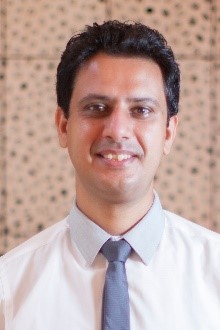Aseismic Design of Structures
Staff
Research Topics
Buildings structural design, Seismic capacity evaluation of buildings, seismic retrofit, disaster mitigation
|
[Wind Resistance Group] Wind and tidal power generation is being developed by applying flow-induced oscillations in structures such as bridges caused by wind and water currents. [Earthquake Resistance Group] Our reseach is a combination of analytical simulation, earthquake damage surveys and structural experimentsin order to evaluate and improve the seismic performance of buildings for disaster mitigation and earthquake-resistant cities. In the new era,, as sustainability is required in all fields, including building engineering,, thus we started new research directions of earthquake-resistant sustainable structural systems, such as the recent hybrid structure of sustainable CLT (Cross Laminated Timber) timber walls and conventional reinforced concrete structures. |
Developing the next generation of offshore wind power
|
Autonomous Kite Sailing Power Generation is being developed, in which a floating structure is sailed using offshore wind power captured by a kite to generate electricity using a water flow turbine mounted on the bottom of the floating structure. The power generated is stored in the floating structure without being connected to transmission lines, and power is generated while sailing freely on the sea, enabling the capture of wind power from distant oceans that could not be extracted before due cost constraints such as transmission costs. Since it is not fixed at sea, the developed system does not interrupt fishing industry. As it functions as a drone ship, it can be used for multiple purposes other than power generation by carrying various sensors and observation equipment. |
Schmatic of the Autonomous Kite-Sailing Power Generation |
Research on seismic capacity evaluation and rapid seismic damage evaluation for reinforced concrete structures
|
In the event of a disaster such as an earthquake, it is extremely important to quickly and accurately identify the damaged areas and the extent of damage to the building structure and to restore it promptly according to the extent of damage, in order to realise a disaster-resistant society. The aim of this research is to propose a practical and simple method for assessing the seismic performance of reinforced concrete buildings, to examine the defects that could cause significant damage in an earthquake and to invent a new sustainable and low-cost method for improving the seismic performance of buildings. In addition, a recently we are focusing on structural health monitoring methods of rapid damage assessmentof buildings. |
International research of disaster prevention
|
The aim of this research is to contribute to improving urban disaster vulnerability in developing countries, which are expanding and densifying in line with economic growth. In collaboration with JICA and other overseas Universities, research is being conducted on the evaluation of seismic performance and seismic retrofitting of reinforced concrete buildings with unreinforced masonry walls. |
Hybrid RC Structure with Timber CLT Walls
|
Recently, a new timber material called Cross Laminated Timber (CLT) was developed in the 1990s: the shear strength of CLT walls is relatively high at around 4 MPa, which is comparable to that of reinforced concrete walls walls. Expanding the use of such CLT walls as an alternative material to reinforced concrete construction or in conjunction with RC structures is considered a promising way to reduce CO2 emissions and realise a carbon-neutral society. The aim of this study is to develop a new concept of hybrid RC structures to improve the sustainability and seismic resistance of RC buildings. Simplified models, finite element analysis (FEM) and experiments are used to study the possible failure mechanisms and seismic performance of timber CLT walls filled with RC frames. |
Publication List
- 比江島慎二, 遠藤愛巳, 山本晃大:自律高空帆走発電の提案とそのエネルギー取得性能の試算 日本風力エネルギー学会論文集,Vol.137, pp.10-21 (2021)
- 比江島慎二, 泉一希:回転振動翼を用いたギャロッピング発電のエネルギー取得性能に関する実験的及び理論的研究 日本風工学会論文集,Vol.46, No.1, pp.1-11 (2021)
- 比江島慎二, 遠藤愛巳, 山本晃大:自律高空帆走発電用パラフォイルカイトの空力特性試験と飛行シミュレータの構築 風工学研究論文集,Vol.26, pp.86-95 (2020)
- Shinji HIEJIMA, Takeji UEDA:Marine current energy harvester using galloping-induced oscillation and rotation. Grand Renewable Energy 2018 Proceedings (2018)
- 比江島慎二,高松宏彰,大熊広樹,上田剛慈:流体励起振動の励振機構を利用した革新的な水流発電用タービンブレード,土木学会論文集B3(海洋開発),Vol.74, No.1, pp.1-12 (2018)
- Aljuhmani A. Ghazi, Alwashali, H., Ogasawara, A., Atsuzawa, E., Maeda, M., Seki, M..:Experimental investigation on the effect of openings on the in-plane shear strength and stiffness of cross-laminated timber panels. Engineering Structures, 254, 113786. (2022)
- Alwashali, H., Maeda, M., Ogata, Y., Aizawa, N., Tsurugai, K.:Residual seismic performance of damaged reinforced concrete walls. Engineering Structures, 243, 112673. (2021)
- Alwashali, H., Islam, S., Sen, D., Monical J., Maeda, M.:Seismic capacity of RC frame buildings with masonry infill damaged by past earthquakes. Bulletin of the New Zealand Society for Earthquake Engineering, 53,1, pp.13-21 (2020)
- Alwashali, H., Sen, D., Jin, K., Maeda, M.:Experimental investigation of influences of several parameters on seismic capacity of masonry infilled reinforced concrete frame. Engineering Structures, 189, pp.11-24, (2019)
- Alwashali, H., Torihata, Y., Jin, K., Maeda, M.:Experimental observations on the in-plane behaviour of masonry wall infilled RC frames; focusing on deformations limits and backbone curve. Bulletin of Earthquake Engineering, 16, 3, pp.1373–1397 (2018)
